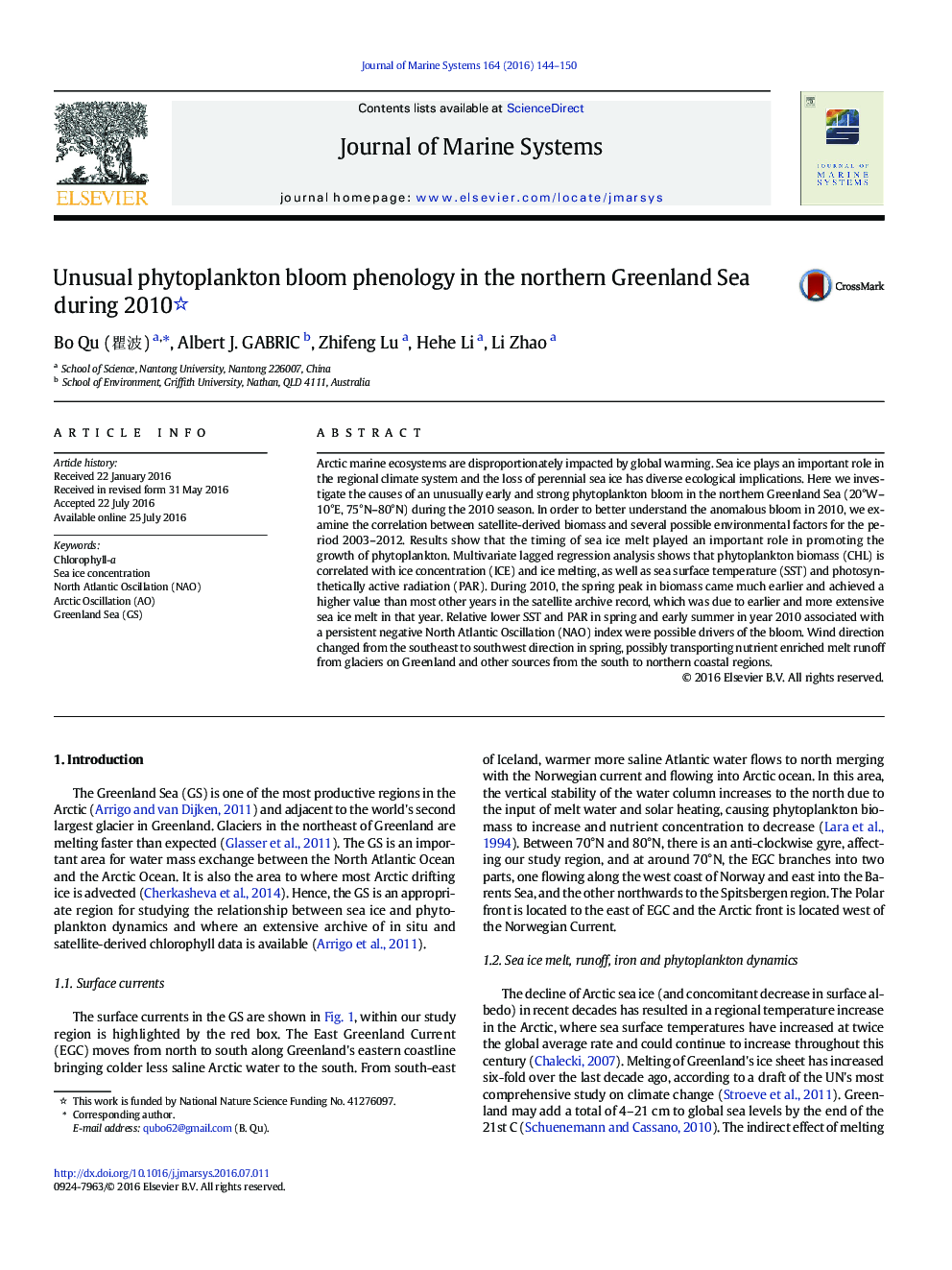| کد مقاله | کد نشریه | سال انتشار | مقاله انگلیسی | نسخه تمام متن |
|---|---|---|---|---|
| 4547849 | 1627266 | 2016 | 7 صفحه PDF | دانلود رایگان |
• The causes of elevated phytoplankton bloom in the northern Greenland Sea in 2010 are mainly due to the sea ice melting.
• Earlier and more extensive sea ice melt, persistent negative NAO, and changing wind directions were the main drivers of the bloom.
• Multivariate lagged regression analysis shows the bloom was correlated with the timing of sea ice melt, PAR and SST.
Arctic marine ecosystems are disproportionately impacted by global warming. Sea ice plays an important role in the regional climate system and the loss of perennial sea ice has diverse ecological implications. Here we investigate the causes of an unusually early and strong phytoplankton bloom in the northern Greenland Sea (20°W–10°E, 75°N–80°N) during the 2010 season. In order to better understand the anomalous bloom in 2010, we examine the correlation between satellite-derived biomass and several possible environmental factors for the period 2003–2012. Results show that the timing of sea ice melt played an important role in promoting the growth of phytoplankton. Multivariate lagged regression analysis shows that phytoplankton biomass (CHL) is correlated with ice concentration (ICE) and ice melting, as well as sea surface temperature (SST) and photosynthetically active radiation (PAR). During 2010, the spring peak in biomass came much earlier and achieved a higher value than most other years in the satellite archive record, which was due to earlier and more extensive sea ice melt in that year. Relative lower SST and PAR in spring and early summer in year 2010 associated with a persistent negative North Atlantic Oscillation (NAO) index were possible drivers of the bloom. Wind direction changed from the southeast to southwest direction in spring, possibly transporting nutrient enriched melt runoff from glaciers on Greenland and other sources from the south to northern coastal regions.
Journal: Journal of Marine Systems - Volume 164, December 2016, Pages 144–150
